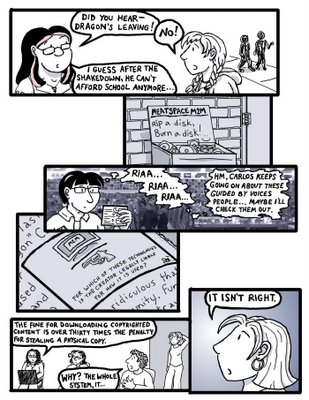In the last 24 hour period I found myself both praising and cursing DRM. I am strongly opposed to locking up culture with a layer of code that often enables content producers to strip away the ability to do things that are clearly Fair Use. The latest example of why I distain DRM is the PERFORM Act proposed by Senators Dianne Feinstein, D-Calif., Lindsey Graham, R-S.C., and majority leader Bill Frist, R-Tenn. The bill would have horrible consequences on Fair Use, while locking way digital culture behind more code and rules. Does RIAA need another blunt instrument to enforce their monopoly on culture? No!
So how did it come to pass that I was actually totting DMR as a possible solution to a social problem?
Yesterday at an Access to Justice Technology Bill of Rights(ATJ-TBOR) meeting for the resource bank sub committee we were discussing possible ways to address concerns related to balancing openness of the courts with the privacy concerns of the court users. In many cases DRM is a possible solution to some problems of mass distribution in the information age. Peter Winn, after a presentation at University of Washington on Unintended Consequences of the Information Age entitled Privacy: Reconciling Reality, mentioned to me that traditionally the availability of court records may have been open to the public but this does not mean they were available to everyone on mass. The distribution these records were limited by the difficulty to copy and distribute the documents meaning that before photo copiers only one or two people might ever see an open court record. By contrast currently Choice Point can make virtually all records available to everyone. This drastic change in how prolific court records are becoming
DRM could duplicate the difficulty of redistribution in the digital world. Maybe DRM needs a new name for this use DPE the Digital Privacy Enabler…


